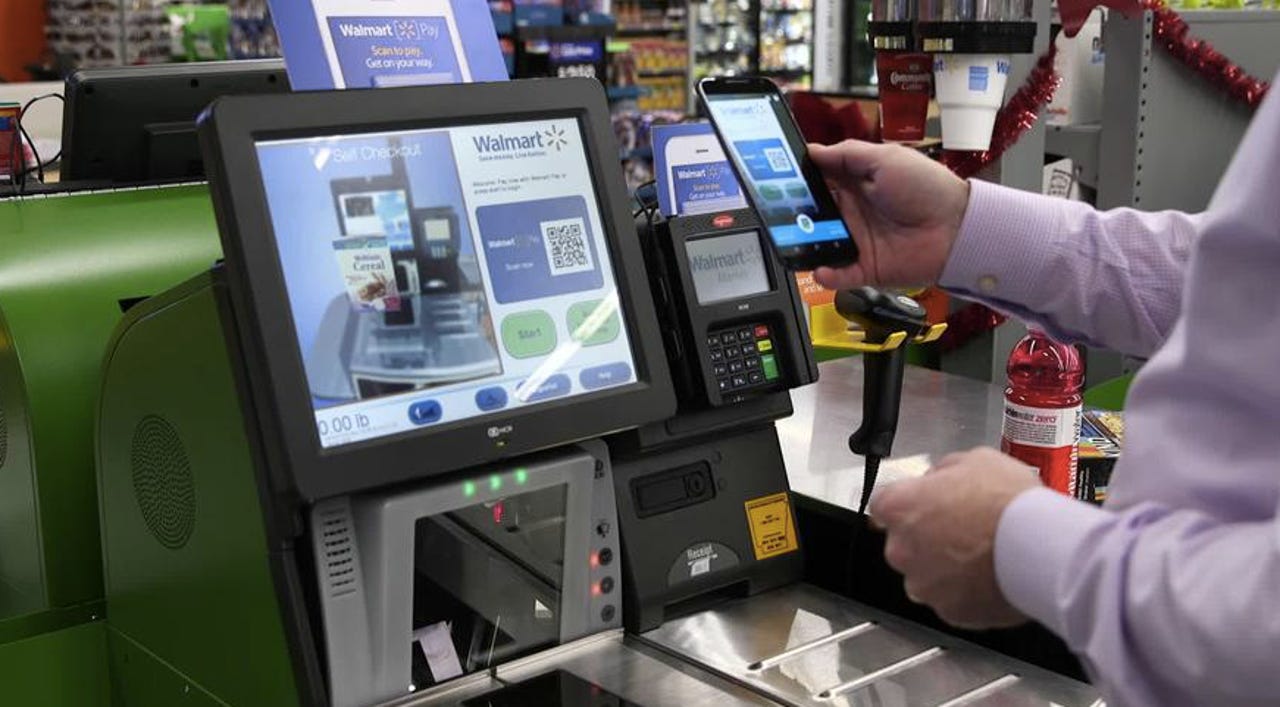How Walmart's launch of Walmart Pay could change the mobile payments game


At first glance, Walmart's proprietary mobile payments service Walmart Pay appears a bit ho-hum.
But the world's largest retailer has bold ambitions for Walmart Pay, and if successful, the service could be the first sign that the mobile payments landscape is shifting in an unexpected direction.
Announced Thursday, Walmart Pay is pitched as a free mobile payments service for use in the retail giant's stores. Once launched in early 2016, Walmart Pay will allow payments on Apple and Android devices with almost all major credit, debit and pre-paid cards or Walmart gift cards.
Featured
So far, pretty standard stuff.
Technologically, there's nothing particularly groundbreaking about Walmart Pay to set the service apart from its competitors -- of which there are many. In fact, the service, which is void of near-field communication (NFC) compatibility, could almost be deemed clunky.
To make a purchase via Walmart Pay, customers must choose the payment option from Walmart's mobile app at the checkout kiosk, activate the camera on their smartphone and scan a code displayed on the register. An e-receipt is then sent to the app after the transaction is complete.
For shoppers looking for speed and convenience, that no-NFC part could be could be a big inhibitor to widespread adoption.
"These 'scan a barcode' solutions lack the magic of NFC," said Julie Ask, mobile research analyst with Forrester. "NFC simply pops up and works if the phone is near a terminal. These 'open the app, find the pay tab and scan' services will be slower unless they find a way to skip steps and match the speed of NFC."
But what Walmart Pay lacks on technology innovation is made up for with strategy.
With Walmart Pay, the retailer has, in effect, gone rogue.
Instead of waiting eons for the launch of CurrentC -- the long-awaited mobile payments system created by the Merchant Customer Exchange (MCX) with the backing of a consortium of major retailers including Walmart, Target and Lowe's -- Walmart took a page from Starbucks and went out on its own.
"No one has set the mobile payments world on fire except for Starbucks and it seems to me that Walmart is moving more in that direction," said James Wester, research director of global payments for IDC.
"Maybe that is the key to it that nobody expected. We keep talking about these big mobile wallets and thought that was the direction we needed to go."
For Walmart to come out and proclaim that it would do its own thing, its own way, shows that there is still a lot up in the air about how consumers are going to buy and shop and pay on mobile devices.
According to Laurence Cooke, CEO of loyalty and payment platform nanoPay, Walmart believes a merchant-branded mobile payment application can significantly change customer shopping behavior, drive loyalty and reduce costs.
"By developing a payment alternative through their own brand, Walmart signals that they believe that their customers will be happy to choose Walmart Pay over solutions from mobile phone providers (e.g. Apple, Samsung, Android) or other payment platform providers," Cooke said.
While it's near impossible to accurately determine what type of mobile payment service fickle consumers will rally behind, perhaps Walmart's attempt could prove that, for consumers, the differentiator is in the benefits. And that's where Walmart's strategy really shines.
As Wester explained, Walmart Pay is all about making the Walmart mobile app a more accurate extension of the physical store. Shoppers can use it not only to make purchases in-store, but also while they are shopping somewhere else.
For instance, say a consumer is browsing through Target and finds a baby stroller they've been looking to buy. They want to do some quick searching to make sure the price is right, so they open the Walmart app and find that Walmart is selling the same stroller at a lower cost. Thanks to the integration of Walmart Pay, the shopper can buy the stroller via the app and have it placed on will-call for pickup at their local Walmart.
"They have effectively put a cash register in a competitor's store," Wester said.
As is the case with mobile payments in general, the success of Walmart Pay will be measured by consumer adoption. Luckily for Walmart, the retailer already counts 24 million registered users for its mobile app, so modest adoption is almost a given.